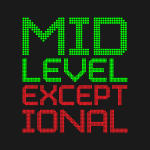Hard Cap 201: Graduate Hard Caponomics
The NBA’s soft cap provides the system with a volatility and nuance that other North American sports leagues just cannot match. The current Collective Bargaining Agreement combines a lack of prohibition on excessive spending with some pretty substantial penalties so franchises that choose to be aggressive can do so but at a great cost, as we saw last season with the Brooklyn Nets.
As I discussed in the introduction to the NBA’s hard cap, the league has created a smart system to prevent teams from gaming the system too much. To briefly recap, there are certain tools for building a team that franchises over the luxury tax apron cannot use, most notably acquiring players via sign-and-trade and using either the full Non-Taxpayer Mid-Level Exception or the Bi-Annual Exception. To close a potential loophole, the current CBA forces teams that utilize one or more of these pieces to stay under the apron for the rest of that league year, creating a narrow hard cap that will affect more than one-third of the NBA’s franchises this season.
That introduction laid the groundwork for the consequences and functional purpose of the hard cap but the real fun comes from how it actually works.
Most importantly, the salary number used in relation to the hard cap differs from the commonly used methodology in ways that are crucial to understand. I like to think of the hard cap as a line that cannot be crossed for any purpose and the different calculation method serves the purpose of eliminating any potential wiggle room teams could exploit.
The central difference in terms of practical application comes from something that often slips under the radar: unlikely bonuses. While NBA contracts can have three different types of incentives (academic / physical achievement, extra promotional and performance) we only need to concern ourselves with performance bonuses here. Under the current CBA, these performance bonuses (which must be for positive achievements and must be determined by specific numerical benchmarks for team and/or individual performance or “generally recognized league honors” you can see here) are split into two categories: likely and unlikely.
The general rule for determining which way a bonus should be classified is whether the player satisfied the condition the previous season. For example, if a player has a bonus for being chosen First Team All-NBA, the assumption would depend on whether he received that honor the year before. The same test runs for most circumstances though a jointly-selected expert can decide in circumstances where the prior season was not representative and the parties cannot agree on which way to go, typically in the case of missing the prior season due to injury or a player being taken in an expansion draft and having a bonus connected to team performance (Article VII, Section 3 (d)(3) of the CBA for those of you following at home). Even with that detail the best way to think about likely bonuses is whether it happened the season before.
This distinction matters a ton in normal salary cap calculations because only likely bonuses count against a team’s cap number for most of the league year. While unlikely bonuses can never be more than 15% of a player’s regular salary for a given season (Article VII, Section 5 (d) (1)), 15% of a large number can still be quite notable. Also remember that since the likely / unlikely discrepancy can change with each season, a player’s cap hit can actually shift for years in the future if the player hits an unlikely bonus. For example, Joakim Noah earned a $500,000 unlikely bonus for making the All-NBA first team last season, which would have pushed the Bulls over the luxury tax had Utah not claimed Erik Murphy when Chicago waived him. While the Bulls dodged the tax bullet, Noah’s performance shifted that bonus onto his cap number for this season and all subsequent ones on his contract unless that assumption changes in a future season.
All of the discussion about unlikely bonuses fits back into the hard cap discussion because using the normal calculation method would give teams a way to actually squeak over that supposedly firm line [Author’s Note: Per Larry Coon, this rule applies to contracts and extensions signed under the current CBA, to be clear]. If teams were able to push right up against that apron line and then go over at the end of the season by a player or two hitting unlikely bonuses, it would at least partially defeat the point of those restrictions.
As such, the most crucial difference to know between determining the hard cap and “normal” salary cap terms is that both likely and unlikely bonuses are counted as it pertains to the hard cap. Other potential tricks like qualifying offers and super cheap rookie salaries get the same treatment.
With this new information, your first question may be does this discrepancy ever matter and the answer is a firm yes. While the league does not publish salaries and likely / unlikely bonus information can be seemingly impossible to uncover, we have a few crucial pieces that help shape our understanding. Thanks to the excellent reporting of the intrepid Tim Kawakami of the San Jose Mercury-News and Yahoo!’s Marc Spears, we know that Andrew Bogut has the maximum 15% unlikely bonuses in each season of his extension signed last summer. In order to bring in that extra scrilla, the Aussie needs to play in at least 65 games AND get named to any level of All-NBA team, All-Defense team, an All-Star team, or win Defensive Player of the Year. Since he did not do so this past season, those incentives still count as unlikely on Golden State’s books.
Incidentally, that same giant bonus gap may save the Warriors from paying the luxury tax this season. Since the hard cap calculation counts both likely and unlikely bonuses, this substantial (about $1.935 million for this season per Kawakami) unlikely bonus limits how close Golden State can get to the apron which sits exactly $4 million over the luxury tax line. While I do not have specific information on any unlikely bonuses for other Warriors, any and all others add to the shield separating the team from the apron. This combination of factors clearly illustrate how the Warriors could spend all they can but still avoid the dreaded tax and eventual repeater penalties for another season as long as their players do not hit enough unlikely bonuses. Plus, if it gets dicey they can pull a Chicago and insure themselves against it later in the season though Bogut’s substantially larger bonus amount would be too big to effectively do so.
Hopefully this exercise gave you greater insight into the challenges involved in running an NBA team and insight into how teams like the Warriors can and have used that system to help themselves in some interesting ways. If you have any further questions, do not hesitate to ask me on Twitter or send an e-mail to midlevelexceptional@gmail.com.


